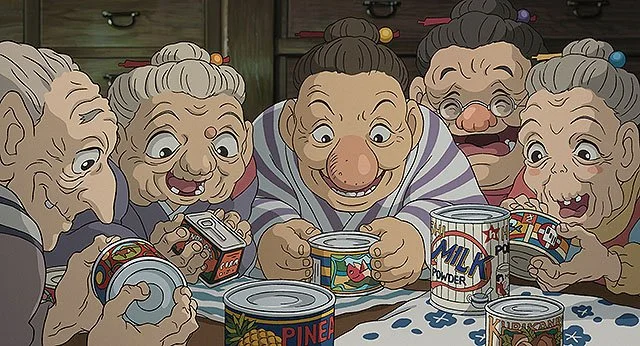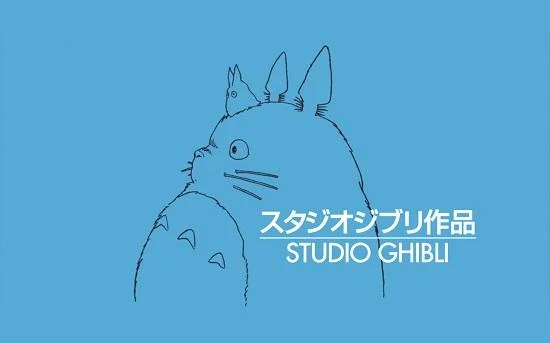My Neighbor Totoro is one of the most well-known among Studio Ghibli’s works. Directed by Hayao Miyazaki in 1988, the film tells the story of two girls, Mei and Satsuki, and their dad, Mr. Kusakabe, as they move to the countryside as they wait for Mrs. Kusakabe to recover from a hospital nearby. Now living in an old country home, Mei and Satsuki look in wonder at the countryside and eventually encounter magical creatures that live in the nearby forest (and even within their home), soon meeting the guardian of the forest, Totoro.
Read MoreFantasy anime has captivated global audiences with rich storytelling and vivid world-building. As Japanese animation continues to evolve in scope, it has the possibility to bring fresh perspectives and imaginative narratives to life in animated form. The upcoming television series Promise of Wizard from Bunta Tsushimi set for release in early 2025, promises to be yet another groundbreaking addition to this vibrant animated genre.
Read MoreAlthough the action genre may seem like nothing more than pure spectacle, there are very specific methods employed by action films to elicit these reactions and assumptions from the audience. Redline (2009), directed by Takeshi Koike, is a Japanese anime film that uses these techniques expertly. Action-packed in every sense of the word, Redline follows the story of Sweet JP, a racer with dreams of winning the infamous Redline race. However, he must overcome the mafia, authoritarian governments, and other deadly racers to achieve his goals.
Read MoreOriginating in Japanese anime, fan service refers to elements in fiction, often of a sexual nature, added to please the audience and cater to fans’ desires by incorporating nudity or highly suggestive and erotic scenes. Keith Russell (2008) argues that fan service scenes in anime create an aesthetic of the “glimpse,” where panty shots, leg spreads, and brief flashes of breasts transform mundane moments of daily life into possibilities charged with desire. These anticipated gestures are briefly frozen in time, sustaining moments of sensory gratification where the body and imagination coexist, establishing a connection between gaze and desire (Russell 2008, 107).
Read MoreHayao Miyazaki’s The Boy and the Heron (2023) is a beautiful bewilderment. It is the auteur’s innermost introspection on what it means to live, or exactly, how we live. Miyazaki is no stranger to isekai (異世界) world-building with his idiosyncratic imagination. His films combine a sense of the real-world situation with irreal events. The Boy and the Heron is no exception. However, as many reviews have already noted, this film is not an easy ride.
Read MoreMiyazaki Hayao’s newest film, The Boy and the Heron (Kimitachi wa dou ikiru ka『君たちはどう生きるか』lit. “How do you live?”) is a Studio Ghibli film about personal growth in a world you cannot control. It’s a tad amusing, too, if you are reading this review before watching the film. I cannot say whether knowing anything before viewing the film is better, as the studio intended, or if context (and warning) are warranted to level any preconceptions based on Ghibli’s and Miyazaki’s reputations or general hype. In either case, perhaps it is best to view the film free of expectations beyond the obvious: beautiful, hand-drawn Ghibli animation.
Read MoreIt is a rare privilege to witness the origins of a globally popular artform like Japanese anime, and even rarer to experience it with live musical accompaniment and traditional Benshi narration.
Read MoreI started researching the figure of Zatoichi the Blind Swordsman for specific reasons, which resulted in the book-length study, The Paths of Zatoichi (2021).
Read MoreThe representation of femininity within animation can sometimes indulge in and reflect problematic modes of gender representation. There is, of course, a long history of demonising forms of femininity, with stereotypical and socially constructed feminine traits including empathy, kindness, warmth and nurturance (see Kite 2001, 563). Not only are these traits often enforced onto women (Wing Sue 2010, 172), but are also conventionally considered signs of weakness (Windsor 2015, 893-897).
Read MorePorco Rosso (1992) is the sixth feature-length film in the colourful and expansive repertoire of Japanese animation giant Hayao Miyazaki. Miyazaki’s film is certainly an unsung masterpiece, frequently branded “underrated,” such as in Rob Bricken’s assertion that “it is unfairly overlooked in [Miyazaki’s] oeuvre.”
Read MoreDuring October 24th-26th 2020, the Kotatsu Animation Festival held its 10th anniversary festival. Sponsored by Japan Foundation London and hailed as Wales’ premiere event for Japanese animation, this year’s event was held online due to the Coronavirus pandemic, with showings of the festival films live on the Kotatsu Japanese Animation Festival YouTube channel and several Zoom Q+A’s and workshops were held.
Read MoreIn a world of globalised animation, anime’s influence is ever expanding, ranging from adult Netflix animations like Castlevania (Warren Ellis, 2017-) to a wide variety of western children’s TV shows from Teen Titans (Glen Murakami and Sam Register, 2003-2006) to She-Ra and the Princesses of Power (Noelle Stevenson, 2018-2020).
Read MoreMakoto Shinkai’s animated film Kimi No Na Wa, translated as Your Name, was a critical and commercial hit when it was released in 2016. The film depicts the strange and wondrous journey of two high school teenagers, city boy Taki in Tokyo and countryside girl Mitsuha in rural lakeside Itomori, who are inexplicably swapping bodies with each other.
Read MoreTo make the iconic French Provençal dish ratatouille, one must first prepare the ingredients, peel and cut the onions, chop the garlic, thinly slice the courgettes and the aubergines, de-seed the peppers and chop the tomatoes. To make animated ratatouille, one must simply pick up a pen.
Read MoreBilled as the first “live-action” Pokémon film, Pokémon Detective Pikachu (Rob Letterman, 2019) adapts some of the franchise’s core themes and mechanics. The film also continues the endeavour of augmented reality game Pokémon GO (2016) – which on release sparked a sensation that saw players from all walks of life hunting Pokémon in the spaces around them via their mobile phones – to bring Pokémon into the real world.
Read MoreAn academic conference on the key creative figures and animated feature films of renowned Japanese production house Studio Ghibli seems an obvious - even borderline ideal - candidate for working through the interplay between fantasy and animation. Our earlier podcast on their third cel-animated feature My Neighbor Totoro (Hayao Miyazaki, 1988) - whose primary spirit character Totoro now functions as the company’s logo image (Fig.1) - suggested just how much there was to say not only about the adventures of the eponymous creature, but the studio’s origins and evolution, production practices, and their relationship to anime as a creative medium, if not Ghibli’s longstanding critical repute and ongoing commercial acclaim.
Read More















